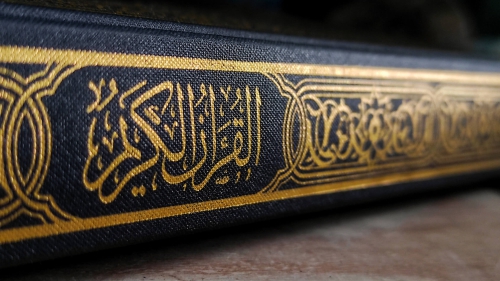Arab Political Parties in Israel’s Election

While the Arab parties fare much better when running together, the Arab Islamic Ra’am party is determined to continue its independent course. It sat in the anti-Natanyahu coalition government last year.
There are approximately one million Arab citizens of Israel, a huge electoral demographic with immense potential. Far from monolithic, the Arabic-speaking citizens of Israel are made up of a diverse collection of communities with a wide range of views: the Druze in the north; the Islamist Bedouin in the south; the Arabs of the mixed cities of Haifa, Acre and Jaffa; the residents of the villages, towns and cities of “the Triangle” and the Galilee; and of course a sizable Christian Arab population. Israel’s Arabs are as divided as Israel’s Jews.
Nationwide turnout in Israel has hovered around the 70% mark for the last 20 years, and has changed little throughout the past five election cycles. Yet turnout in Arab localities is extremely volatile, reaching highs of 65% and lows of 45% in recent years. In fact, the 45% figure in the last round of elections was an all-time low from Arab localities.
The major Arab parties today, Hadash, Balad, and Ta’al (currently running together as The Joint List), and Ra’am (the Islamist United Arab List), together hold 10 seats in the current Knesset; six for the Joint List, and four for Ra’am. The vast majority of the Arab vote now goes to Arab parties, with only 9% going to Jewish parties in the last election.
The largest party today within the Joint List, both in support and infrastructure, is the far-left Hadash party. Hadash, an acronym of “The Democratic Front for Peace and Equality,” is a coalition of Jews and Arabs, which has traditionally supported coexistence and Jewish-Arab cooperation, though its positions have hardened over the years. The outspoken leader of both Hadash and, in recent years, the Joint List, is Ayman Odeh.
Balad, led by Sami Abu Shehadeh, is the Hebrew acronym for the National Democratic Alliance, and also an Arabic word for country or nation. It is a nationalist party and the most controversial out of the four parties, with former senior members traveling to Syria and Lebanon to show solidarity with Hezbollah terrorists, and another former MK serving two years in prison for smuggling phones to convicted Arab terrorists in Israeli jails.
Balad advocates for a binational state and the recognition of Israel’s Arab community as a national minority with autonomy in a number of fields. This differs slightly from Ahmad Tibi’s Ta’al (also nationalist) which still supports a two-state solution, and demonstrates greater flexibility in its cooperation with the Jewish parties.
The fourth party is Ra’am, “The United Arab List,” which was formed from the southern wing of Israel’s Islamist movement. Its leader, Mansour Abbas, controversially pulled out of the Joint List prior to the last elections in 2021, gambling that it could garner enough support with a totally different strategy: to join a coalition and become the kingmaker, rather than remain perennially in opposition. Abbas had read the pulse of the Arab community where polls had shown big majorities in favor of joining a coalition in Israel, a trend that has continued into the current election cycle.
When the four main Arab parties united as a single list (as in 2015, September 2019 and 2020), Arab turnout has been around 60-65% (only 5-10 points behind the general turnout), and the Arab parties have subsequently done well in the election.
But when the parties have been divided, as in April 2019 and the most recent election in 2021, turnout has dropped to below 50% and the parties performed poorly. In fact, at the most recent election, the 10 seats the Arab parties won, representing 8% of the Knesset, contrasted sharply with the Arab community’s 21% of the population as a whole. Unlike the Jewish parties, Arab parties receive more votes when they run together.
So one might have thought that the Arab parties would look to reunite for this election. In fact, the opposite is true. The Joint List and Ra’am will again run separately. So a recent poll reported in The Times of Israel suggests Arab turnout could drop to as low as 40%.
Yet even if the Joint List manages to overcome the squabbles among its three remaining parties, Ra’am will be not be “coming home” any time soon to what it sees as the party of eternal opposition. Mansour Abbas has crossed that Rubicon. He believes that Ra’am can again prove a kingmaker as it did in the last election.
And despite being called “terror supporters” by Netanyahu and his fellow Likud campaigners, Ra’am has not ruled out sitting with Natayahu either.
So Arab voters can now be packaged into two camps: those voting to be in the opposition (Joint List), and those looking to join the next coalition (Ra’am).
Netanyahu understands this and has attempted to tone down his, and his party’s, language of late. The last thing Natayahu needs is to inadvertently energize a potential Arab base which is currently disinterested, like in 2015, by attacking an entire community.
Interestingly, despite Netanyahu’s past rhetoric, and his embrace of extreme Jewish elements and voter suppression tactics such as the Likud-led attempt to place cameras in Arab polling stations, Likud still received around 5% of Arab (including Druze) votes in the last election, more than any other non-Arab party.
There is also a claim that Ra’am leader Abbas would actually prefer to join a Netanyahu-led government, the argument being that the only way for his Arab community to get true recognition and acceptance into Israeli society is to join a government with the right and Netanyahu.
Furthermore, Ra’am has more in common with the religious and socially conservative Jewish parties that are part of the Netanyahu coalition than with its more liberal partners in the outgoing coalition government.
Topics: Elections, Israel, Israeli Arabs
Views: 1850
Related Suggestions

















